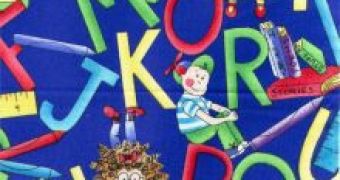According to a new study, the shapes of letters and symbols used, throughout history, by the world's many cultures were not determined by the ease of writing them, but by the ease of reading them. All the shapes used in various writing systems, from the Greek alphabet to the Chinese symbols, may have arisen to take advantage of the way human vision has evolved to see common structures and shapes in nature. Mark Changizi, a theoretical neurobiologist at the California Institute of Technology, says that letters and symbols have their particular shapes because "these are what we are good at seeing".
"Evolution has shaped our visual system to be good at seeing the structures we commonly encounter in nature, and culture has apparently selected our writing systems and visual signs to have these same shapes," Changizi said.
Surprisingly enough, this idea arose from a study of how robots see the world. Computer scientists, devising object recognition systems, have known for some time that the best and simplest way to create an object recognition system is to focus on the junctions of objects. So, for example, a robot navigating a room reduces all the details of a corner to its "Y" shape and sees a wall because of its "L" junction with the floor.
"It struck me that these junctions are typically named with letters, such as 'L,' 'T,' 'Y,' 'K,' and 'X,' and that it may not be a coincidence that the shapes of these letters look like the things they really are in nature," said Changizi.
Is this for real or is it a mere coincidence?
Changizi and his colleagues from Caltech, Shinsuke Shimojo, Qiong Zhang and Hao Ye, decided to topologically describe the basic contours of letters in various writing systems and symbols. "Topologically" means that, for example, a basic shape like an "L" is equivalent to a "V" because it can be turned into a "V" by bending and stretching it without any cutting or gluing.
By analyzing all these writing systems topologically, they ended up with a catalog of 36 basic shapes employing two or three contours, and then ranked them according to how frequently they occur in the objects primitive people would have seen. The result was that these proved, to be precisely, that the most common contours are found in nature.
"We tested the hypothesis of whether cultures have selected visual signs and letter shapes to possess the shapes occurring in nature, and the answer is yes," Changizi says. "It's also striking that the systems that are intended to be seen have high correlations to natural forms. Company logos, for example, are meant to be recognized, and we found that logos have a high correlation. Shorthand systems, which are meant to give a note-taker speed at the expense of a commonly recognizable system of symbols, do not. So the figures we use in symbolic systems and writing systems seem to be selected because they are easy to see rather than easy to write," he concludes. "They're for the eye."
The brain area specialized in detecting written language
More than a century ago, a French neurologist suggested that there should be a specific region of the brain that processes the visual images of words because otherwise people wouldn't be able to read except by laboriously recognizing letter after letter, rather than whole words.
However, most scientists rejected this idea because people have only been able to read for several thousand years, while the brain is much older. Several thousand years doesn't seem to be a sufficient period for such a specialized brain area to evolve.
Nonetheless, a recent medical event, involving an epileptic patient, has shown that, actually, there is such a brain area (this idea has also been previously supported by various brain imaging studies). Neurologist Laurent Cohen, of the Hopital de la Salpetriere, and his colleagues, had to treat a 46-year-old epileptic. His chronic seizures were due to a small portion of his brain - neighboring the so-called visual word-form area. The standard procedure is to surgically remove that part of the brain.
But before the operation, the scientists performed a series of tests on the man, including a wide array of reading challenges. He proved normal in all regards, including his ability to quickly recognize words no matter how many letters they contained.
Two weeks after the operation he was cured of his epilepsy but developed a reading problem. The tests showed that his ability to comprehend longer words had slowed by half. Even six months later, he needed roughly an additional 100 milliseconds for each additional letter to recognize a word.
This study has thus shown that, in spite of the short period of time, there is one brain area that specialized in reading - although the area itself didn't develop for the purpose of facilitating our reading capacities. Alex Martin of the National Institute of Mental Health wrote: "One possibility is that the (visual word-form) area performs a visual processing function that predisposed it to being co-opted for reading."
And indeed, as Changizi's team has shown, the prior function probably had to do with the general capacity of quickly recognizing the contours of natural objects. It wasn't so much that our brains changed, in order to deal with written language, as written language was shaped for fitting our preexisting brains.

 14 DAY TRIAL //
14 DAY TRIAL //